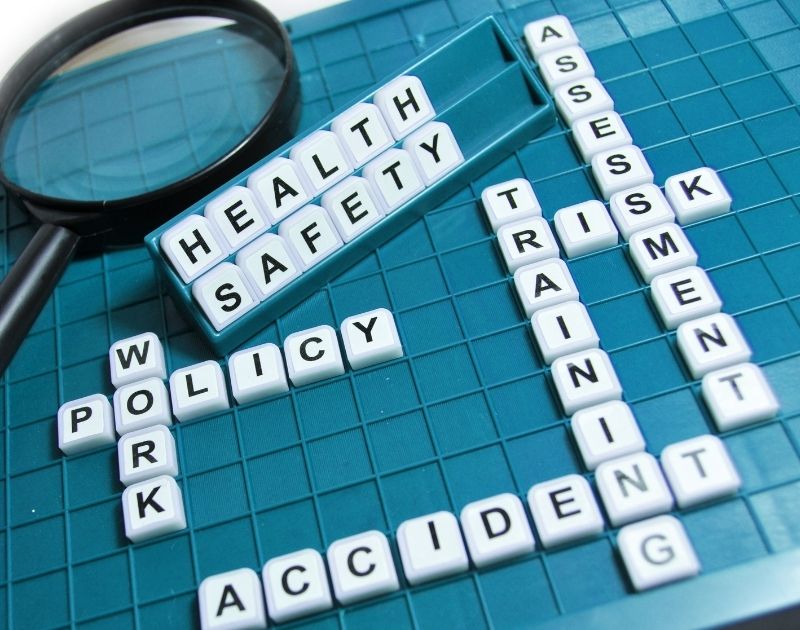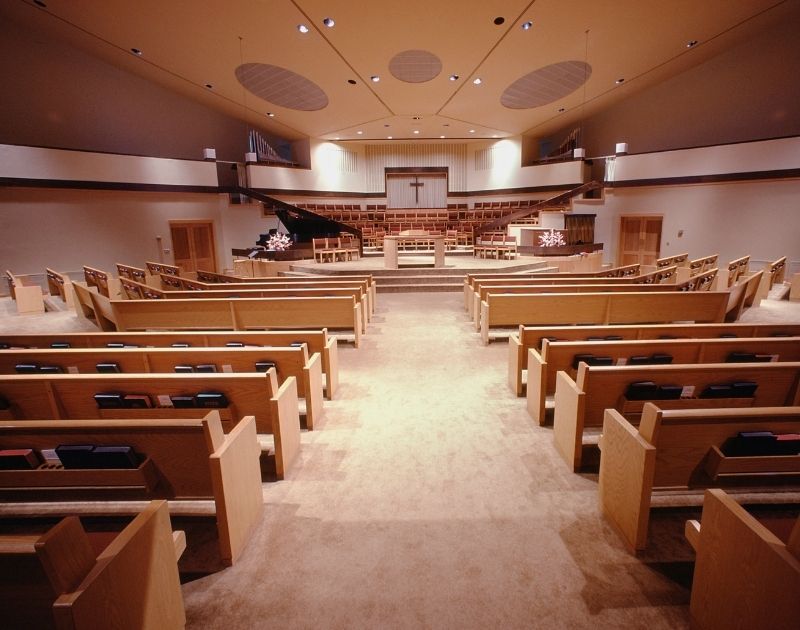In the commercial cleaning and facilities maintenance industry, companies must adapt swiftly to evolving challenges – from persistent labor shortages to heightened health and safety standards in the post-pandemic world. Assett Commercial Services, with 13 locations across the U.S. (from Anchorage, AK to Austin, TX), has turned these industry challenges into opportunities for innovation and leadership. By staying attuned to broader industry trends – such as embracing new cleaning technologies, committing to sustainability, and rigorously updating health and safety protocols – all Assett locations are overcoming labor shortfalls while delivering exceptional service. This blog explores how Assett leverages industry best practices and forward-thinking strategies to maintain high cleaning standards across all facilities, establishing thought leadership in the process.
Tackling Labor Shortages with Innovation and “People-First” Strategies
Labor shortages have been a defining challenge in recent years for cleaning service providers. In 2024, the U.S. faced 350,300 annual job openings for janitors and cleaners, and the industry struggled with high turnover and competition for workers. A tight labor market has driven up costs and strained existing staff, risking burnout and declines in service quality according to cleanlink.com. Assett Commercial Services recognized early that overcoming this labor crunch required both innovative solutions and a commitment to supporting its workforce.
-
Adopting Automation and Smart Scheduling: Assett has invested in cleaning technology to allow its teams to “do more with less”. Automated cleaning equipment – like robotic floor scrubbers and vacuums – now handle repetitive tasks, freeing up human employees for detail-oriented work. Industry-wide, such autonomous mobile robots (AMRs) have become a game-changer, enabling cleaning crews to cover more ground in less time. These robots maintain quality standards even when staff is limited. For example, occupancy-sensing tools can dynamically adjust staffing and cleaning schedules based on building usage, boosting productivity by up to 40% per worker. Assett’s locations leverage similar data-driven scheduling software to ensure that every available team member is deployed where and when they’re needed most – maximizing efficiency during labor crunches.
An autonomous floor-cleaning robot in a retail setting. Such cleaning robots help address workforce shortages by handling routine floor care, allowing Assett’s staff to focus on high-value tasks.
-
Making Work Easier and More Efficient: Technology is not just replacing labor – it’s enhancing labor. Assett equips its janitorial teams with modern, easy-to-use tools that reduce physical strain and training time. Simpler, ergonomic machines (for tasks like carpet cleaning or window washing) and user-friendly maintenance systems mean staff can be productive faster and with less fatigue. This focus on labor-saving equipment and intuitive processes helps Assett locations keep productivity high even when headcount is low. As one industry expert noted, such innovations allow cleaning teams to “do more with less, given the challenge of finding and retaining staff,” combining IoT, robotics, and AI for a “force multiplier” effect. In practice, this means an Assett cleaner in Denver or Asheville can cover more area in a shift today than a larger crew might have a few years ago, thanks to better tools and workflow software.
-
Investing in Employee Retention and Training: Assett also understands that technology works best alongside a motivated, skilled team – not in place of one. Every Assett location emphasizes unparalleled staffing support, including thorough training (a practice rooted in Assett’s origins as a healthcare cleaning specialist) and an “automated hiring system” that ensures new hires are well-prepared and vetted. Industry research confirms that recruitment and retention are top priorities for cleaning companies, with 61% of contractors seeing staffing as a significant growth risk according to facilitiesmanagementadvisor.com. To win the “talent war,” 86% of businesses plan to raise wages and improve working conditions. Assett follows these best practices by offering competitive pay, benefits, and a positive work environment – so it can attract and keep reliable cleaners even as competitors face high turnover. Treating staff well not only reduces the costly cycle of re-hiring and training, but also boosts service quality. Experienced, satisfied employees are more efficient and uphold higher cleaning standards, which keeps Assett’s clients happy (and contracts secure) despite the labor squeeze.
The results: By combining automation with workforce development, Assett’s locations have weathered the labor shortage better than most. Even amid a nationwide staffing crunch, Assett has maintained consistent service across all its markets – from large teams in Texas to smaller teams in Alaska – by empowering fewer people to accomplish more. This dual approach of innovating and investing in people exemplifies thought leadership in an industry that must adapt or fall behind. As one facilities services president put it, embracing new tech “can improve the quality of service… better retain team members, and gain a competitive advantage”. Assett’s experience bears this out: happy crews armed with smart tools are a winning formula for reliable cleaning services.
Embracing Cleaning Technology to Enhance Service Quality
Staying on the cutting edge of cleaning technology is a hallmark of Assett Commercial Services’ strategy, closely tied to overcoming labor challenges. But beyond alleviating staffing pressures, technology elevates overall service quality and client confidence. All 13 Assett locations operate under the principle that innovation is necessary to “stay afloat in a rapidly changing marketplace.” By tuning into developments in the broader janitorial and facilities industry, Assett continuously upgrades its capabilities. Some notable tech trends and Assett’s applications include:
-
Data-Driven Cleaning and “Proof of Clean”: In today’s environment, commercial clients don’t just want a space to be clean – they want evidence that it’s been cleaned to a high standard. Assett has adopted data analytics and smart sensors that monitor cleaning activities and facility usage in real time. For instance, IoT sensors in restrooms can alert staff when supplies are low or when traffic is high, prompting timely servicing. Robotic floor scrubbers and vacuums used by Assett automatically log their operational data – square footage cleaned, hours run – providing transparent “proof of clean” to clients. These systems not only build trust with customers but also allow managers to optimize cleaning schedules and resource allocation based on factual usage patterns. In short, smart cleaning programs tie together sensors, automated machines, and cloud-based software to ensure no area is overlooked and every hour of labor is maximized.
-
Advanced Equipment and Robotics: The cleaning industry has seen an explosion of new equipment that Assett eagerly evaluates and deploys where beneficial. From UV-C light disinfection devices to electrostatic sprayers, advanced tools are raising the bar for thoroughness (more on health impacts in the next section). Notably, autonomous cleaning robots are now mainstream – and not just for floors. Some can navigate and sanitize large areas or even carry supplies alongside a human cleaner. Assett’s larger facilities (like hospitals or big-box retail sites) have begun using autonomous floor scrubbers after hours, which can clean more square feet per hour with minimal supervision, and then recharge themselves. These robots handle repetitive tasks diligently, never calling out sick – a boon amid labor shortages – and they reduce the risk of human error or injury in tasks like nightly floor cleaning. Importantly, Assett treats these as “cobots” (collaborative robots) rather than replacements for staff. By taking over monotonous work, the robots enable human employees to focus on detail work and responsive customer service, making the overall cleaning outcome superior. It’s a fine example of technology and human expertise complementing each other in a modern cleaning operation.
-
Integrated Management Systems: To effectively run multi-location services, Assett leverages professional janitorial management software. This includes digital quality inspection checklists, mobile apps for crew scheduling and time-tracking, and asset management for equipment maintenance. These systems create consistency across Anchorage, Boise, West Chester, and all branches – every task is tied to instruction, verification, and accountability, often with live reporting. The result is that clients anywhere enjoy the same high standards. As industry surveys indicate, over 90% of cleaning contractors use some form of business software, and many plan to invest further in tech to strengthen margins. Assett’s early adoption of such digital transformation means less paperwork and more actionable insights. For example, if one branch notices improved efficiencies from a new vacuum model or a scheduling tweak, those insights are quickly shared company-wide via the centralized system. In essence, technology helps Assett “integrate workflows and manage the entire business more effectively,” leaving managers free to focus on strategic improvements.
By championing these innovations, Assett Commercial Services positions itself not just as a cleaning vendor, but as a knowledgeable partner leveraging the latest tools to benefit clients. The company’s thought leadership is evident in how it evaluates emerging trends – whether autonomous mobile robots, AI-driven analytics, or Internet of Things sensors – and adopts those that truly add value. This future-ready mindset is crucial in an industry where 46% of contractors expect robotics to revolutionize cleaning in coming years. Assett is already making that revolution a reality on the ground today.
Ensuring Health and Safety in a Post-Pandemic Era
If the pre-2020 cleaning paradigm was about appearance (“does it look clean?”), the post-2020 world has shifted decisively toward health-focused cleaning (“is it truly clean and safe?”). All Assett Commercial Services locations have been at the forefront of implementing heightened health and safety protocols in line with the latest public health guidance. This commitment stems from Assett’s roots in healthcare cleaning, which set a high bar for disinfection and compliance. Now, whether servicing an office, a school, or a store, Assett applies rigorous standards to protect building occupants and its own staff. Key aspects of these health & safety updates include:
-
Enhanced Disinfection Routines: Assett’s teams conduct frequent and thorough disinfection of high-touch surfaces as a core practice. Whereas once a nightly wipe-down might have sufficed, now surfaces like door handles, elevator buttons, light switches, and railings are sanitized multiple times throughout the day. This aligns with industry-wide shifts – facilities everywhere are prioritizing hygienic environments and upping cleaning frequency to reduce pathogen spread. In fact, studies show dramatic increases (dozens of percentage points) in cleaning protocols since COVID-19 emerged. Assett ensures its crews in every location are trained on the proper use of EPA-approved disinfectants and follow a detailed checklist to hit all touchpoints. The mantra is “cleaning for health rather than merely for appearance”, and Assett’s clients can feel that difference when they walk into a truly sanitized space.
-
Advanced Disinfection Technologies: To complement manual cleaning, Assett deploys cutting-edge tools for an extra layer of protection. For example, many Assett locations utilize electrostatic sprayers for broad disinfection of rooms and surfaces. These devices charge cleaning droplets so they adhere evenly to surfaces (even hard-to-reach corners), achieving more comprehensive germ elimination. Similarly, UV-C light disinfection units are used in sensitive environments (like healthcare facilities or during deep cleans) – they can disinfect air and surfaces by killing viruses and bacteria with ultraviolet ligh. Such technologies, once mostly found in hospitals, are increasingly standard in commercial cleaning and are part of Assett’s repertoire to meet clients’ health-safety needs. An example from the industry: hospitals have rapidly adopted UV-C robots and electrostatic foggers to ensure rooms are pathogen-free between uses. Assett brings those “advanced disinfecting technologies” to all facility types, giving every client access to hospital-grade cleaning innovations. This not only provides peace of mind in a world still mindful of COVID-19, flu, and other illness, but also helps businesses meet any regulatory health guidelines that have emerged.
-
Real-Time Monitoring of Cleanliness and Air Quality: Prevention is as important as reaction. Assett is exploring sensor technology for real-time monitoring of cleanliness metrics – for instance, devices that measure air quality (particulates, CO2, even viral particles) or sensors that detect when a conference room has been used and needs servicing. Industry leaders note that “advancements in air quality and real-time monitoring systems” are becoming essential tools for healthy environments. By focusing on indoor air quality, better ventilation, and prompt response to spills or contamination, Assett helps clients maintain safer workplaces. Many offices have upgraded HVAC filters and added air purifiers; Assett’s cleaning schedules account for this by including air vent cleaning and ensuring those systems function optimally (dust-free vents and regularly replaced filters). Also, Assett’s supervisors perform regular quality audits using ATP testing (which measures microbial residue) to scientifically verify that cleaning meets health standards. In essence, technology + diligence = safety in Assett’s approach. The company stays on top of evolving guidelines from agencies like the CDC and OSHA, updating its protocols as needed and training all local teams accordingly.
-
Protecting Cleaning Staff: Health and safety updates aren’t just for clients’ benefit – they also protect the janitorial workforce, who are on the front lines. Assett provides all necessary personal protective equipment (PPE) to its crews, from gloves and masks to specialized gear when handling strong disinfectants. Training emphasizes safe chemical usage, proper ventilation during cleaning, and techniques to avoid cross-contamination. By fostering a safety culture (reinforced through its “professional systems” and checklists), Assett has reduced workplace incidents and ensured its cleaners remain healthy. This focus reflects the broader industry understanding that improving working conditions is a must in a tight labor market. When employees feel safe and valued, it further aids retention – another example of how Assett’s strategies interconnect to address multiple challenges at once.
In summary, Assett Commercial Services treats health and safety as non-negotiable priorities. The company’s ability to swiftly implement new cleaning protocols in all its locations (for example, rolling out a 200-point disinfection checklist across sites) has reassured clients that their facilities are in good hands. High-profile outbreaks and the pandemic taught everyone that cleaning is truly critical infrastructure; Assett responded by redoubling its commitment to clean for health. Today, whether it’s flu season, a new virus variant, or just day-to-day wellness, Assett’s proactive measures help minimize risks – keeping both client communities and Assett’s own team members safe.
Committing to Sustainability and Green Cleaning
Beyond immediate operational challenges, Assett Commercial Services also looks at the bigger picture of sustainability in the cleaning industry. Environmental responsibility is a growing expectation among clients and the public, and it goes hand-in-hand with health and safety. All Assett locations strive to reduce their environmental footprint while delivering top-notch service – an approach that resonates with modern trends in facilities management. Some key facets of Assett’s sustainability commitment include:
-
Green Cleaning Products: Assett uses eco-friendly cleaning chemicals and supplies wherever possible. Harsh chemicals can pose health risks and environmental harm, so the company sources certified green cleaning agents that are effective yet low in toxicity. From Green Seal-certified detergents to microfiber cloths that reduce waste, these choices make a difference. The industry is seeing surging demand for green cleaning – in fact, the market for green cleaning products is projected to reach $430 billion by 2030, driven by 46% of consumers actively seeking eco-friendly solutions. Assett’s adoption of green products not only meets client preferences (like schools or medical offices that ask for fragrance-free, non-toxic cleaners), but also contributes to healthier indoor air by minimizing volatile organic compounds (VOCs). It’s a classic win-win: cleaner buildings and cleaner planet.
-
Sustainable Equipment and Practices: Assett’s equipment choices factor in energy efficiency and emissions. Many traditional cleaning machines (floor buffers, pressure washers, etc.) either consume a lot of electricity or, worse, run on gasoline or propane (emitting fumes). In line with industry shifts, Assett is transitioning to battery-powered or electric equipment for tasks like floor scrubbing and carpet cleaning. Newer models not only eliminate on-site emissions but often use water and chemicals more sparingly through smart dosing systems. Some Assett locations in Texas, for example, have upgraded to lithium battery auto-scrubbers that can run longer and recharge faster, improving productivity while cutting fuel use. Clients focused on ESG appreciate this effort. Likewise, Assett trains staff in waste reduction practices – such as using dilution control systems (to avoid chemical overuse), reusable containers for supplies, and route planning that saves driving miles between sites. Sustainability is built into daily routines.
-
Recycling and Waste Management: Cleaning often generates waste (used paper towels, old supplies, etc.), but Assett works with clients on proper recycling programs. At many facilities, Assett crews handle recycling streams for paper, plastics, and e-waste in addition to regular trash, ensuring materials actually get recycled rather than landfilled. The company also responsibly disposes of hazardous waste (like fluorescent bulbs or used chemicals) per environmental regulations. These efforts contribute to clients’ sustainability goals and certifications. In some Assett-served buildings, the company has helped implement composting or zero-waste initiatives, reflecting a partnership approach to facility management. As sustainability is a key trend – identified alongside technology and workforce development as one of three pillars underpinning industry growth – Assett’s proactive stance shows leadership. The message is clear: cleanliness and sustainability can go hand in hand.
-
Aligning with Client ESG Goals: Many of Assett’s clients (from corporations to healthcare systems) have their own Environmental, Social, and Governance (ESG) targets. Assett contributes by providing documentation on its green products and labor practices, helping clients meet certifications such as LEED for green buildings or WELL Health-Safety ratings. For example, vendors are being held accountable for sustainability standards – and Assett gladly shares its protocols and improvements. The company’s “great people” are not only cleaning specialists but also stewards of client facilities, advising on things like reducing energy use (turning off lights while cleaning unused areas) or reporting water leaks and inefficiencies they notice. This consultative, partnership-oriented approach further solidifies Assett’s value. By staying “tuned into the broader industry” focus on sustainability, Assett ensures it remains a preferred provider for forward-thinking clients.
In a tangible sense, these green initiatives also loop back to labor advantages: younger workers and many customers take pride in working with a company that cares about the environment, aiding both recruitment and customer satisfaction. It’s part of Assett’s long-term vision of “cleaning for a better future.”
Conclusion: Leading the Industry by Example Across 13 Locations
From Anchorage’s icy landscapes to the bustling offices of South Austin, Assett Commercial Services demonstrates every day how a cleaning company can rise above industry challenges through innovation, dedication, and adaptability. By proactively addressing labor shortages (with automation, smart management, and employee-centric policies) and consistently implementing the latest health, safety, and sustainability practices, Assett has turned potential weaknesses into strengths. All 13 locations operate with a shared philosophy and playbook – one that is constantly updated with lessons from the field and developments in the industry. This unified yet nimble approach is why Assett can service all types of facilities (healthcare, education, corporate, industrial) with reliable quality, even under tight labor conditions or stringent health requirements.
In doing so, Assett has positioned itself as more than a service provider – it’s a thought leader in the commercial cleaning arena. The company’s commitment to staying educated on market trends (like cleaning robotics, data analytics, and green cleaning movements) benefits not only Assett’s own business but also its clients and employees. Clients gain a partner who brings them the best of what’s new – be it a more efficient cleaning method or insights into maintaining a healthier building. Employees gain an employer who invests in their training, safety, and well-being, which is increasingly rare in an industry known for turnover.
The broader cleaning and facilities maintenance industry is evolving rapidly. Labor constraints might persist for years, and expectations for safe, sustainable cleaning will only grow. Assett’s experience across multiple states shows that success lies in embracing change head-on. As the ISSA (Worldwide Cleaning Industry Association) observed, the organizations that thrive are those that “recognize talent as their most valuable asset” and harness technological and sustainability-driven growth. This perfectly describes Assett Commercial Services’ ethos. By caring for its people and innovating its processes, Assett has not only overcome recent labor and health challenges – it has set a high bar for competitors to follow.
All Assett locations will continue to share knowledge and improvements, ensuring that a breakthrough in one market can benefit clients in all markets. Whether it’s deploying a new robot in Boise, piloting a green cleaning program in Sarasota, or refining training in Knoxville, Assett’s network operates as a learning organization. In the end, the company’s partnership mentality, accountability, and great people (as its motto emphasizes) are what truly enable it to surmount hurdles like labor shortages and deliver on the promise of clean, safe, and healthy facilities.
Assett Commercial Services is proud to lead by example – proving that with the right strategies, even the toughest industry trends can be transformed into opportunities for growth and excellence. Each challenge overcome cements Assett’s reputation as a trusted, forward-thinking partner in the cleaning and facilities management industry. And as new challenges and trends emerge, you can be sure Assett will remain at the forefront, lighting the way for others to follow.




